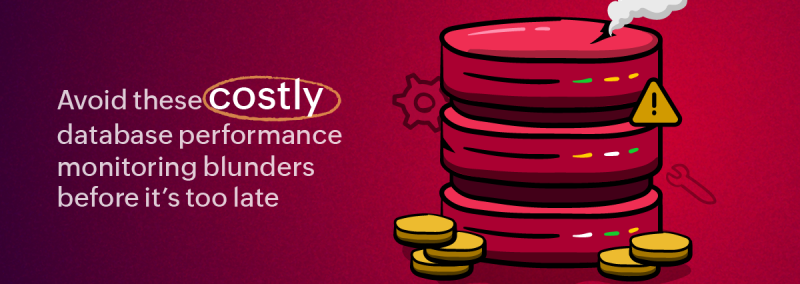Apache Cassandra is widely used by organizations for its scalability and flexibility. The capacity to handle large chunks of unstructured data and zero failover functionality has made it a favorite database server among IT organizations. But as functional as it is, the database comes with great architectural complexity. One blind spot can lead to unexpected downtime, or worse, an application crash. To unlock seamless operability with Apache Cassandra, admins should stay a step ahead by observing the behavior of the infrastructure.
Here are a few challenges you might face while monitoring Apache Cassandra and tips for how you can overcome them with a suitable monitoring solution.
Problem 1: Difficulty in diagnosing performance issues
The identical-node architecture of Apache Cassandra makes it difficult to diagnose an existing issue. Numerous clusters and their replicas that contain large packets of data employ a lot of nodes, increasing the complexity of the infrastructure.
Solution: Comprehensive monitoring
Admins need to keep track of each cluster and their respective nodes in real time. Getting detailed insights on the behavior and performance of every existing element in the infrastructure can help the IT team stay alerted about the issues that arise. The solution’s interface should be able to provide insights on timeouts, latency, memtable stats, and memory allocation. Database admins should also be able to get real-time updates on pending and completed tasks to study and resolve issues that are slowing down the database.
Problem 2: Too many KPIs
Apache Cassandra is known for its disparate components, each of them having unique attributes and KPIs. Cassandra monitoring metrics like read and write latency, replication factor, throughput, and disk usage speak for the performance of the database and the percentage of space and memory occupied in each node in a cluster. Tracking errors, exceptions, and overruns keeps admins alert in case of critical situations like crashes. Tracking garbage collection helps the admins manage memory efficiently. But studying all the metrics for each node in the database, prioritizing the functionalities, dodging irrelevant data reports, and analyzing behavior becomes a sizable burden for database admins.
Solution: Elaborate reporting
Employing an Apache Cassandra monitoring tool that can report on KPIs of any given element in real time, along with the prognostic data of the element, makes it easy for admins to identify performance anomalies and analyze the database’s behavior. But given the numerous elements in the database, the solution should also be able to summarize and aggregate the KPI values to help admins understand performance trends and focus on clusters that need more attention. The solution’s interface should be customizable, enabling admins to choose and prioritize what they want to know more about.
Problem 3: Size of the infrastructure
Apache Cassandra’s scalability lets organizations deal with humongous amount of data, which are usually impossible to monitor through a command line interface or a monitoring solution that can accommodate only a limited number of instances. Database admins cannot keep changing monitoring solutions as their IT scales. Also, the server’s dynamic architecture contributes to evolving functionalities of applications. The threshold values of the attributes assigned to the applications vary rapidly with time, increasing false alarms and alert noise when not optimized in real time. This often leaves admins perplexed as they try to prioritize the severity of the issues.
Solution: Smart and scalable monitoring interface
Along with the infrastructure, the monitoring solution that keeps an eye on it should be scalable. The solution should be able to accommodate the requested number of instances and be robust. It should come with a smart alerting system that can auto-update the dynamic thresholds, set severity levels, and automate responsive actions and escalation, helping admins to bring down the alert noise. Admins should be provided with an interface like a centralized Cassandra monitoring dashboard that could expand its view and abilities with the growing infrastructure, including a detailed yet quick view of alerts, escalations, and severity levels.
Problem 4: Capacity planning
Upgrading Apache Cassandra database involves cellular-level analyses for node additions, storage allotment, and resource allocation. Admins need to study the performance trends, analyze them, and arrive at a common ground that promises system efficiency and cost efficiency. Given the complex infrastructure of Apache Cassandra, to manually perform such analyses is close to impossible.
Solution: Performance forecasts and actionable reports
The monitoring solution should be able to keep track of each element in the ecosystem, study the performance curves, and forecast their performance. With an accurate forecast in hand, admins can have a precise estimate for capacity and resource requirements. This helps them provide for the database efficiently, without compromising on resources or costs.
How can Applications Manager help?
ManageEngine Applications Manager is designed to monitor IT ecosystems of all sizes and complexities, without hidden costs or expensive licensing plans. The solution’s centralized monitoring interface will help you to monitor Apache Cassandra databases alongside the rest of your IT. Applications Manager checks all the boxes needed for monitoring high-traffic applications, be it on-premises or cloud.
Interested? Schedule a demo with one of our experts or download a 30-day, free trial to see how Applications Manager can enhance your organization’s IT.

